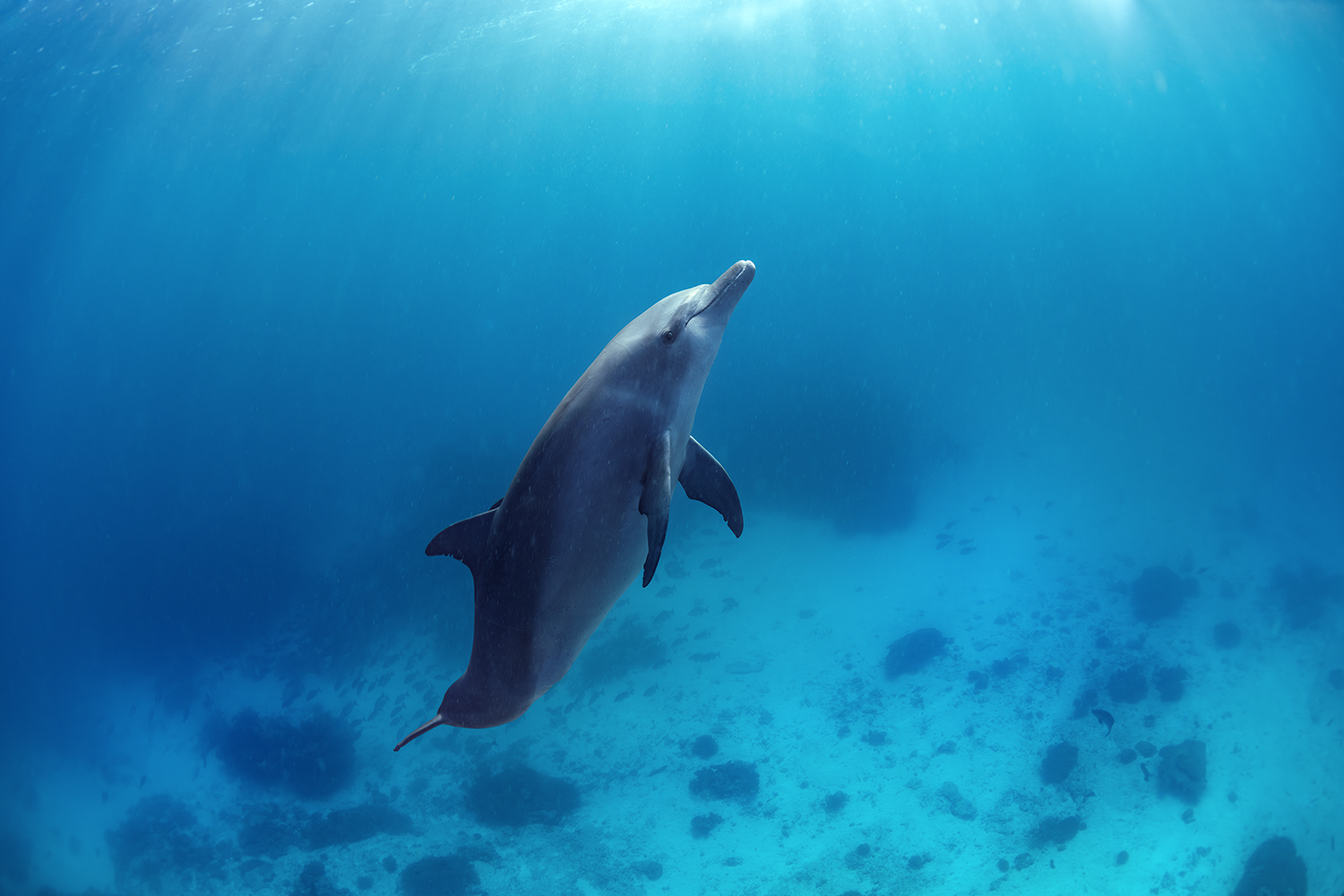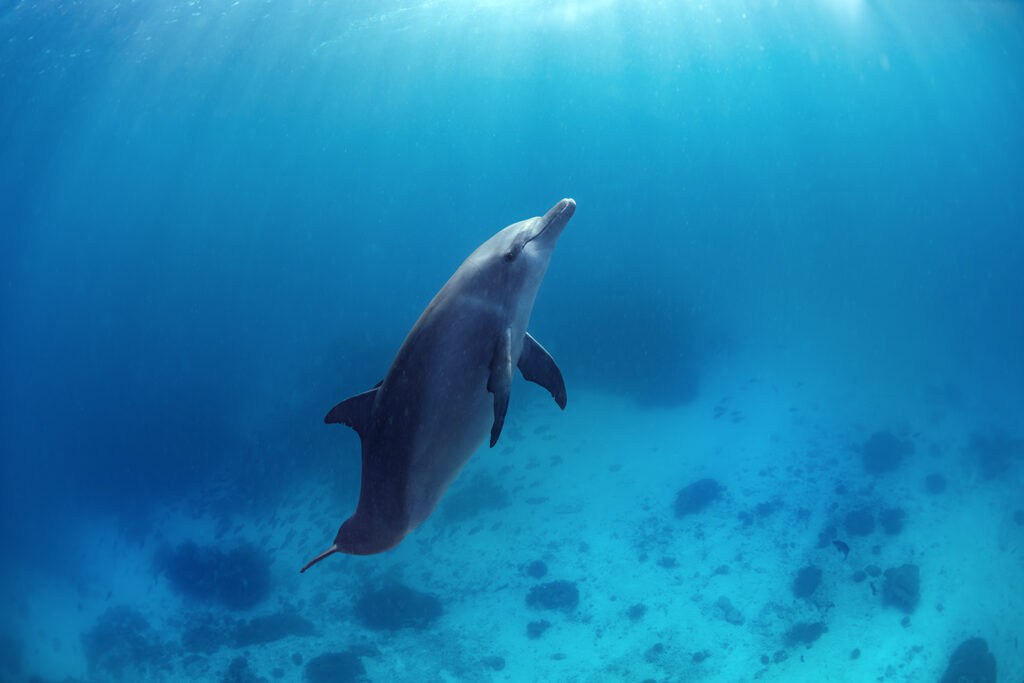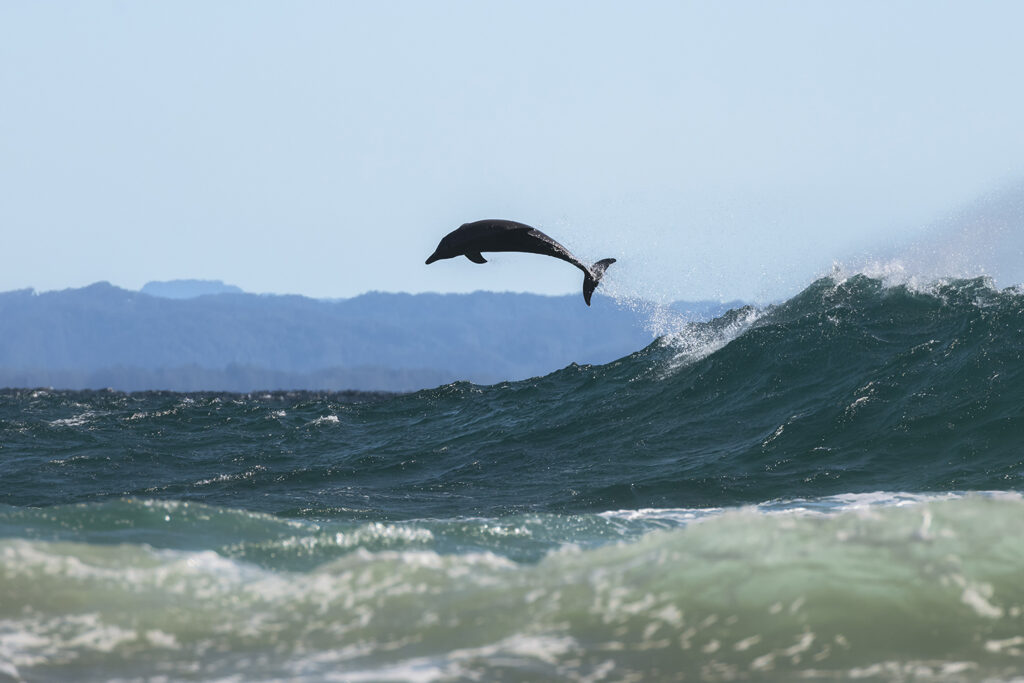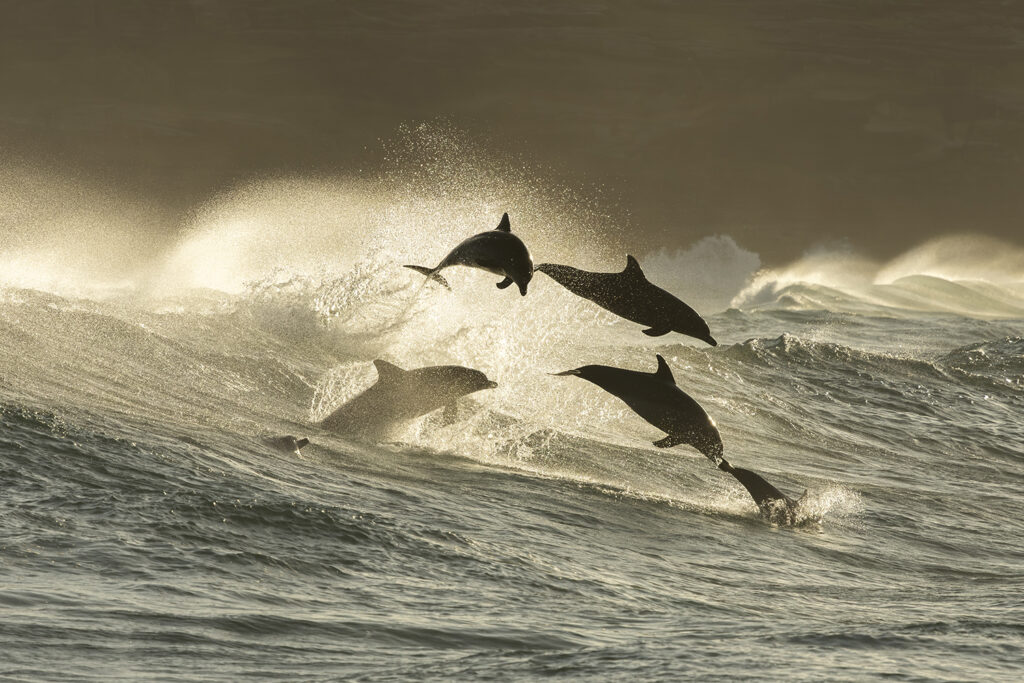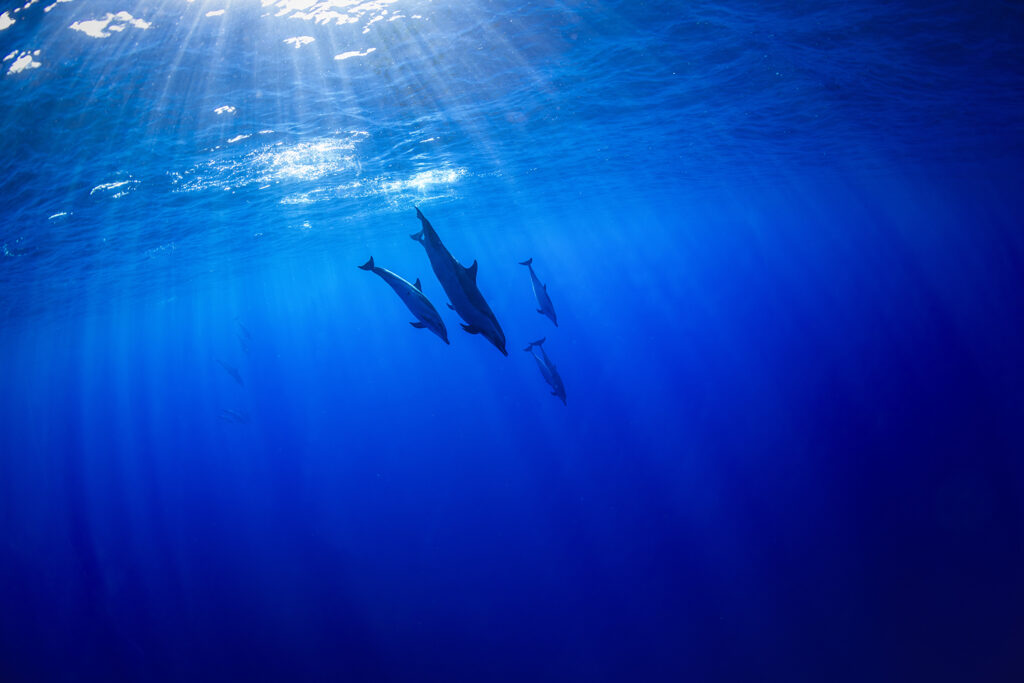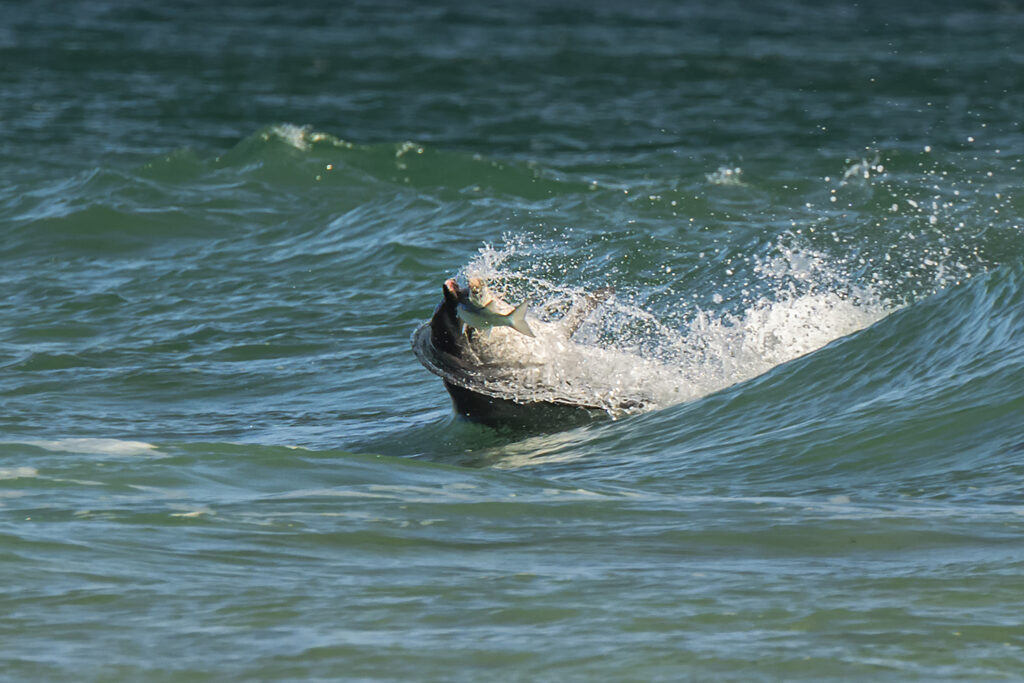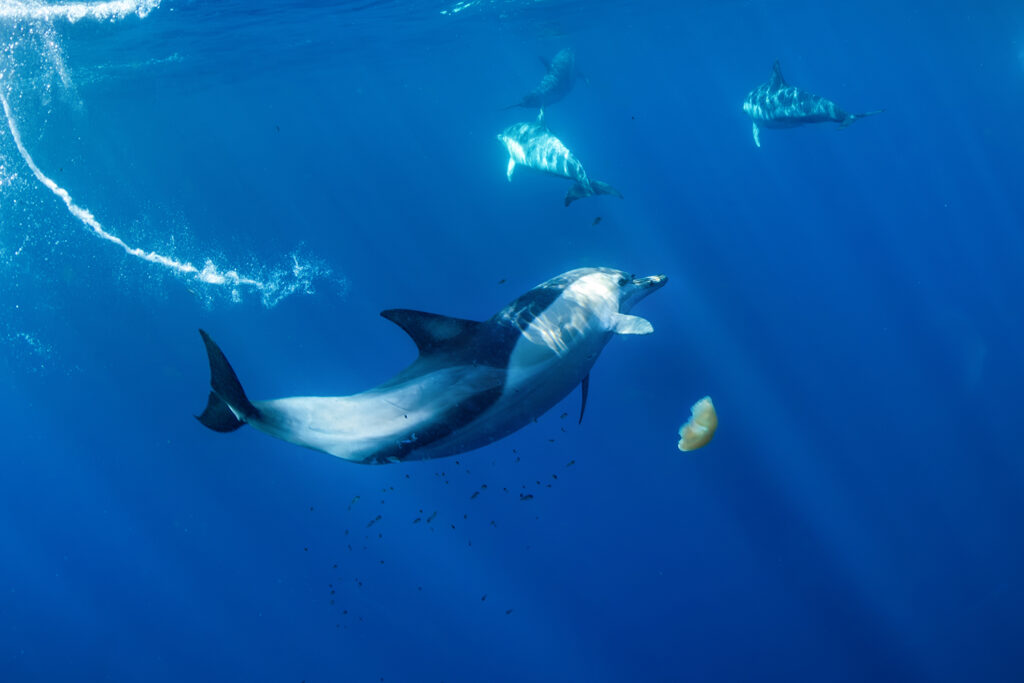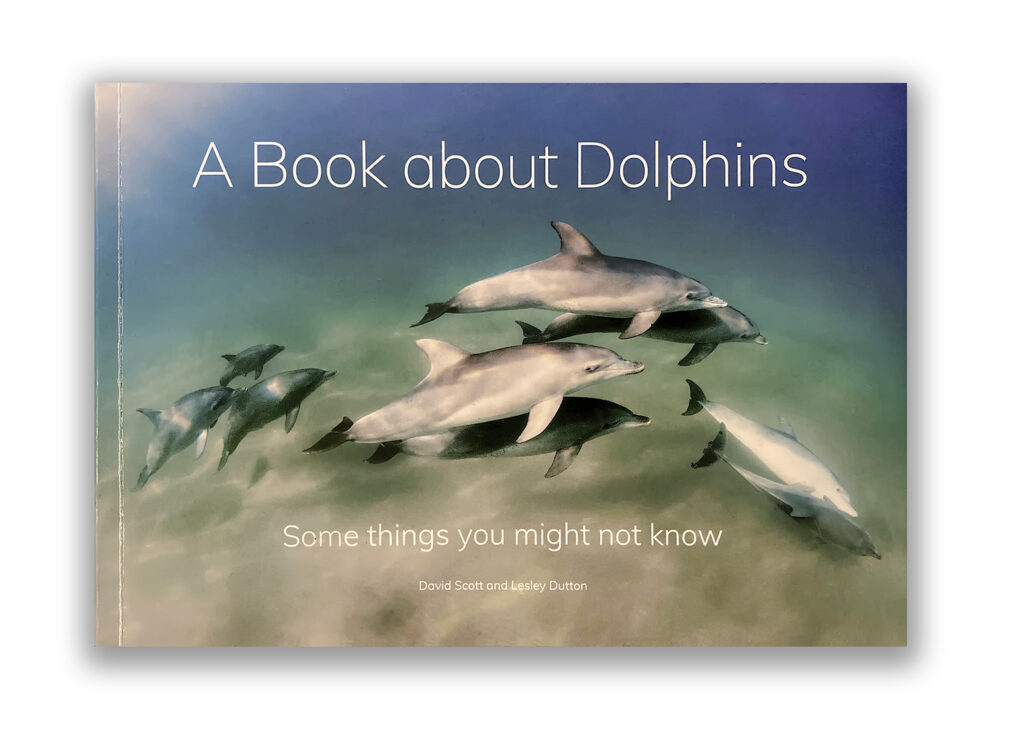Size and Speed
There are currently 40 recognised dolphin species, ranging from the small and lightweight Māui dolphin (1.7 meters long, 50 kilograms) to the powerful killer whale (orca), which can grow up to 9.5 meters and weigh around 10 tonnes.
Some dolphin species can reach speeds of up to 29 km/h and leap as high as 9 meters. The killer whale, technically the largest dolphin species, is among the fastest marine mammals, clocking up to 56 km/h.
Built for Performance
Dolphins’ skeletal structure is designed for speed and agility. Their dorsal fins help prevent spinning during movement, while their streamlined shape allows for graceful swimming and acrobatics.
They’re often seen leaping out of the water – sometimes called porpoising – which reduces drag and saves energy. Other reasons for these jumps include orientation, social signalling, communication, or simply play.
Deep Dives and Adaptations
Some dolphin species are capable of diving to remarkable depths. To do this, they can slow their heart rate and redirect blood from less critical tissues to vital organs like the brain and heart.
In 2016, trained dolphins in Bermuda dove beyond 600 meters, with one reaching a record-breaking 1,008 meters. That’s more than 100 times the pressure at sea level – an incredible feat for any mammal.
The Intelligent Ocean Dweller
Dolphins are widely considered among the most intelligent animals on Earth. Their brain-to-body mass ratio is second only to humans. While humans have brains roughly seven times larger than average for mammals, dolphins’ brains are four to five times larger – far more than is necessary just to catch fish.
Their intelligence shows in curiosity, social behaviour, and long-term memory. Captive dolphins have recognised old companions after being apart for 20 years.
Brains and Bonds
One theory suggests that dolphins developed large brains to manage their complex social lives. Navigating relationships, moods, and group dynamics requires extraordinary cognitive power.
Planning and problem-solving are also part of their skill set. For example, some captive dolphins rewarded for collecting trash learned to store large pieces at the pool bottom. They then tore off small sections repeatedly to maximise their rewards.
Inventiveness and Learning
Dolphins display impressive creativity when it comes to food. Techniques vary across populations, and many are taught from mother to calf.
Some dolphins use echolocation to detect fish buried in the sand – especially those with internal swim bladders. But for bladderless fish, sonar is useless. In Shark Bay, Australia, dolphins began using sea sponges to protect their beaks while digging, creating a rudimentary tool. This sponge-using behaviour is learned, mostly passed from mothers to daughters.
Similar cultural learning is seen in Brazil, where male river dolphins use weeds and sticks in their courtship displays.
Inspired by True Experience
Much of what’s included in this story comes from A Book about Dolphins, written by David and Lesley after more than a decade studying wild dolphins in the Port Stephens – Great Lakes Marine Park. Their deep love and respect for these remarkable creatures runs through every page and helped shape this series.
